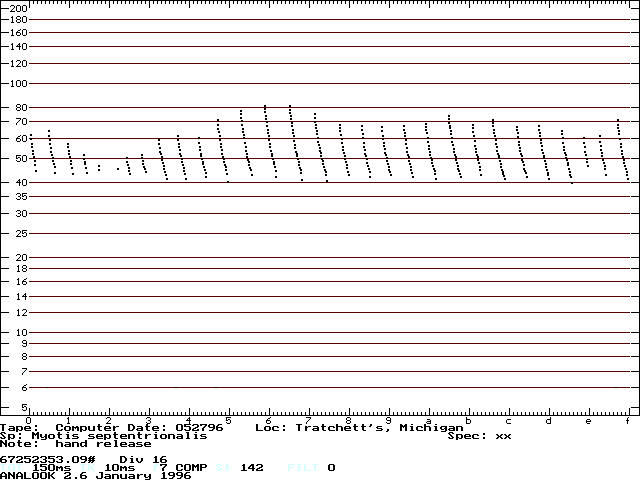
Description:
-
Recognition
-
Weight: 1/8 - 1/4 oz. (5-7 g)
-
Body length: 3 - 3 7/8 in. (75-100 mm)
-
Wingspan: 9-11 in. (23-27 cm)
-
Forearm: 1 3/8 - 1 1/2 in. (35-39 mm)
The northern long-eared bat has dull brown fur with a slightly paler belly. True to its name, the northern long-eared bat has long ears that would extend well beyond the muzzle (nose) if laid flat. In addition to its ear length, the northern long-eared bat also has a long, pointed tragus. These two characters can help distinguish this species from little brown bats.
Northern long-eared bats are most active one to two hours after dusk and then again right before sunrise. Northern long-eared bats are capable of picking up insects like katydids off of vegetation. This feeding process is known as gleaning. Generally, northern long-eared bats begin feeding after dusk and often carry larger prey to their night roosts for consumption.
Roosts:
-
Summer Roost: Northern long-eared bats roost in buildings, hollow trees (both alive and dead), behind shutters, under loose bark, and under shingles.
-
Winter Roost: In the winter, northern long-eared bats roost in caves and mines. Within these areas, northern long-eared bats often roost in cracks and crevices.
Diet:
Small night-flying insects.
Similar Species:
Little Brown Bat has glossy fur, smaller ears and tragus.
Conservation:
Northern long-eared bats have dramatically declined in Maryland due to white-nose syndrome. They are listed as both state and federally endangered. These bats are
protected under the Maryland Nongame and Endangered Species Act. It is against the
law to take or attempt to take (meaning harass, harm, pursue, hunt, shoot, wound, kill,
trap, capture, collect) any bat. For this reason, please follow DNR guidance to properly
manage bats in your house.
Sounds:
Northern Long-eared Bat Spectrograph

Courtesy of Bat Call: Acoustic Call Library and Species Accounts
Photo by: Dr. J. Scott Altenbach
Return to Field Guide to Maryland Bats